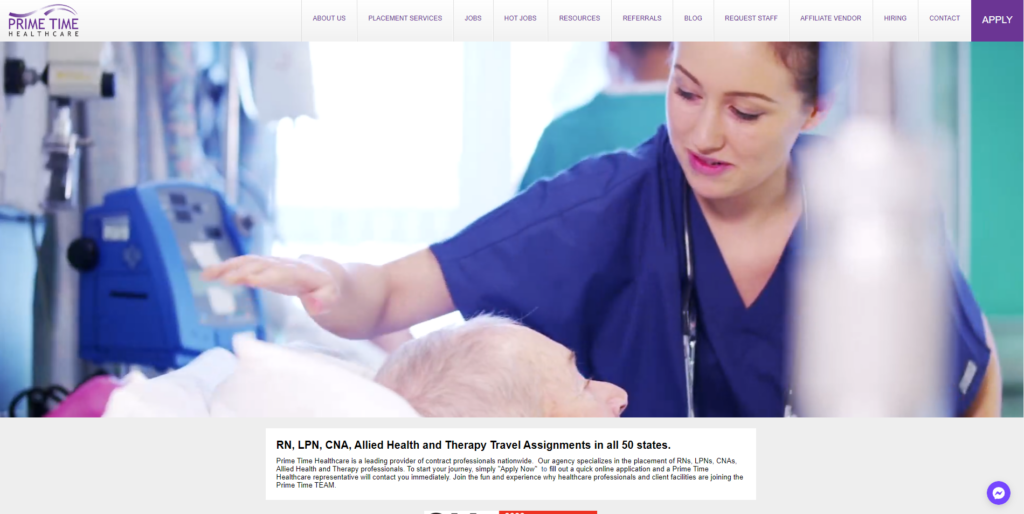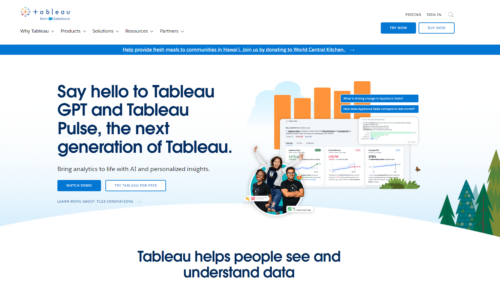Stuck in a waiting room during your lunch break? Primetime Healthcare might just be your lifeline. Discover how this trend is cutting wait times and boosting patient satisfaction. We'll reveal the how-to’s and why it’s a game-changer for busy lives. Stay tuned!
Primetime Healthcare: An Analytical Gaze
Primetime healthcare has become a buzzword in recent years.
So, what's all the fuss about?
Before diving deep, let's unpack the term.
What is Primetime Healthcare?
In essence, “primetime healthcare” doesn't refer to a specific hour on the clock.
It's not about getting a doctor's appointment at 8 PM or scheduling surgery for prime TV hours.
Instead, the term captures the idea of healthcare being in its most vital, optimal, and highlighted state.
Much like how primetime television features the most anticipated shows, primetime healthcare offers peak services, quality, and accessibility.
Real-life Stories: The Impact of Primetime Healthcare
Imagine Sarah, a young professional in New York City.
She's swamped with work and rarely has time for regular check-ups.
Sarah often finds herself pushing medical appointments because, well, 3 PM on a Tuesday just isn't convenient.
However, with the emergence of primetime healthcare, she now has options that fit her schedule and needs.
Instead of the traditional 9-5, healthcare providers have expanded their services to cater to individuals like Sarah.
Late-night clinics, weekend appointments, and 24/7 telemedicine services are all part of this revolution.
In Sarah's world, this shift means fewer sick days, better health, and peace of mind.
Then, we have Raj, a software engineer from San Francisco.
Raj is diabetic.
One night, after feeling exceptionally unwell, he tapped into his telehealth app, reaching a doctor in what you could call “primetime.”
Within minutes, Raj was receiving guidance, getting the necessary prescription and care, all from the comfort of his home.
This is the promise and potential of primetime healthcare.
The Factors Driving Primetime Healthcare
Technology and Innovation
In today's age, tech plays a pivotal role.
Telemedicine, health apps, and wearables all contribute to the rise of healthcare's primetime.
Patients can now track their vitals, consult doctors virtually, and even get prescriptions without setting foot outside.
The Modern Lifestyle
Our routines have drastically changed.
The traditional 9-5 workday is evolving, and with it, the need for flexible healthcare solutions.
People demand services that can fit into their hectic schedules, be it late at night or early morning.
Quality Over Quantity
Primetime healthcare doesn't just mean more hours.
It signifies a focus on quality.
Patients expect top-notch care, whether it's 2 PM or 2 AM.
This shift necessitates highly trained staff, state-of-the-art equipment, and seamless service delivery.
Challenges in Implementing Primetime Healthcare
While the concept sounds ideal, it's not without its hurdles.
For one, there's the issue of staffing.
How do institutions ensure their staff isn't overworked or fatigued?
Then, there's the cost.
Extended hours might mean higher operational costs, translating to increased charges for patients.
Moreover, not all medical treatments or services can be made available round-the-clock.
Specialized procedures might still need appointments, and some treatments might not be feasible during off-peak hours.
The Future: Is Primetime Healthcare Sustainable?
While the model shows promise, its sustainability is often debated.
On one hand, as tech advances and our lifestyles continue to evolve, the demand for such healthcare services will likely increase.
On the other, there are questions regarding its economic viability, quality maintenance, and long-term effects on medical staff.
Understanding the Nuances of Primetime Healthcare
Primetime healthcare, as earlier touched upon, revolutionizes the way we perceive medical access and timing. Let's go deeper into various angles that define this concept.
The Cultural Shift
Cultural attitudes towards health have evolved drastically over the last few decades. People are more proactive, aware, and demanding of their healthcare rights and services.
Consider John, a fitness enthusiast in his early 30s. For him, timely access to physiotherapists, nutritionists, and regular health check-ups isn't just a need; it's a lifestyle. The rise of primetime healthcare means that John doesn’t have to sacrifice work hours or personal commitments to keep himself in top shape. He can consult with specialists at a time that works best for him, underscoring the true meaning of patient-centric care.
A Global Perspective
Different countries approach the concept of primetime healthcare differently, based on their healthcare infrastructures and patient demands.
- Scandinavian countries, renowned for their robust healthcare systems, have been early adopters, extending service hours and integrating technology to deliver health services seamlessly.
- Asian markets, with densely populated urban centers, see the necessity to cater to the needs of a demanding, time-strapped population. Evening clinics and teleconsultations are more than just trends; they are evolving into the norm.
Economic Impacts of Primetime Healthcare
The economic implications of extending healthcare hours are vast and varied. Primetime healthcare can potentially lead to job creation, with more professionals required to cater to the increased hours. It also offers opportunities for part-time workers or those who prefer non-conventional work hours.
However, extended operational hours also mean higher overhead costs for healthcare facilities, from electricity to added staffing costs. How facilities manage these costs while ensuring that medical services remain affordable is a topic of intense debate.
The Role of Big Data and AI
In today's era, data is king. The healthcare industry is no exception. With the advent of big data and artificial intelligence (AI), predicting patient needs, streamlining services, and offering timely care has become more achievable.
Imagine a scenario where AI algorithms predict peak patient loads, helping healthcare facilities staff appropriately, ensuring neither a shortage nor an excess. This not only optimizes costs but also guarantees that patients receive timely and efficient care.
Mental Health: A New Front
Mental health, long ignored or stigmatized in many societies, is finally receiving the attention it deserves. The demands of modern life have led to an increased need for psychological and psychiatric services. Here, primetime healthcare plays a crucial role. After a stressful day, individuals may find evening or night hours more suitable to consult with their therapists or counselors.
Remember Anna, a single mother juggling between her job, parental duties, and personal challenges. The weight of her responsibilities often means that her mental health takes a backseat. But with the availability of counseling services during primetime, she finds an avenue to address her anxieties and stresses without added scheduling conflicts.
Primetime Healthcare and Rural Areas
While urban centers have been quick to adopt the model, rural areas present a different challenge. In regions with limited medical facilities and professionals, ensuring round-the-clock service is tricky. The role of mobile clinics, community health initiatives, and telemedicine becomes paramount in these scenarios.
Patient Education and Awareness
For primetime healthcare to be truly effective, patients need to be made aware of its availability and benefits. Comprehensive campaigns, patient testimonials, and community engagements can play an integral role in this.
The Ethical Dimensions of Primetime Healthcare
The idea of primetime healthcare brings with it various ethical considerations. At its core, healthcare is a fundamental human right. By extending the hours and introducing a “primetime” concept, does it imply that there are off-peak, or less critical times for healthcare?
For example, imagine a patient, David, who can only afford to visit a healthcare provider during what's considered “off-peak” times due to his tight work schedule or financial constraints. Does this mean he receives lesser care, or has to wait longer? Healthcare facilities must ensure that the introduction of primetime doesn't compromise the level of care during other hours.
Policymakers and Primetime Healthcare
Governments and healthcare regulators play a vital role in the seamless integration of the primetime healthcare model. Establishing guidelines, ensuring equitable service distribution, and monitoring quality are imperative.
In countries with nationalized healthcare, policymakers are pressed to weigh the cost-to-benefit ratio of such a model. If taxpayer money is funding healthcare, is the added expenditure of extending operational hours justified?
Furthermore, there's the challenge of standardizing healthcare delivery. What one facility might regard as “primetime” could differ from another. Creating a standardized, universally accepted definition becomes crucial.
Training and Skill Development
Introducing extended hours and new service models demands specialized training. Healthcare professionals must be equipped not just with medical knowledge but also with the skills to handle the unique challenges that come with primetime operations.
Consider paramedics and ER staff. With the likelihood of more patients during primetime hours, these professionals must be adept at managing high-pressure situations, ensuring every patient gets timely attention.
Primetime Healthcare and Specialized Medicine
While general health services might be easier to adapt to the primetime model, specialized medicine presents unique challenges. Complex surgeries, advanced diagnostic tests, and other specialized procedures may not always fit into extended operational hours due to the intricate logistics and planning they involve.
However, there's a silver lining. Specialized consultations, follow-ups, and preliminary tests can certainly be accommodated, ensuring patients have quicker, more convenient access to specialized care.
The Role of Health Insurance
Insurance companies and their policies will need to evolve with the advent of primetime healthcare. With treatments and consultations happening beyond traditional hours, insurance claims, approvals, and settlements might need to be processed faster. Insurers would need to adapt to these changes, ensuring that patients don't face bureaucratic hurdles when seeking care during primetime.
Patient Autonomy and Choice
The rise of primetime healthcare also signifies a greater degree of patient autonomy. By choosing when to avail medical services, patients can plan their schedules better, reduce work-hour losses, and balance personal commitments.
However, with autonomy comes responsibility. Patients must be educated about the importance of regular health check-ups, the potential risks of delaying treatments, and the benefits of timely medical intervention.
In Summary
The world of healthcare is witnessing a transformation. Primetime healthcare, while a promising model, requires a comprehensive, multi-faceted approach for successful implementation. From ethical considerations to the roles of policymakers and insurers, every stakeholder in the healthcare ecosystem must come together to make this model work efficiently and equitably.
Frequently Asked Questions
Q:1 What is Primetime Healthcare?
Primetime healthcare refers to medical services optimized for peak times, ensuring the best accessibility and quality, adjusted for contemporary lifestyles. It doesn't denote specific hours but rather the pinnacle of healthcare services.
Q:2 How is technology influencing this model?
Technology, especially telemedicine and health apps, is central to primetime healthcare. These innovations allow patients to access medical advice and services seamlessly, making healthcare more responsive and adaptable.
Q:3 Are there economic implications for Primetime Healthcare?
Absolutely. While the model can result in job creation and improved service quality, it also means potentially higher operational costs. The economic balance is crucial for its sustainability.
Q:4 How does Primetime Healthcare benefit patients?
It offers patients flexibility. With longer service hours and technological integrations, patients can schedule appointments around their lives, reducing disruptions and ensuring timely access to medical care.
Q:5 Are there challenges in implementing this model?
Like any change, there are hurdles. Ensuring consistent care quality, managing operational costs, and preventing staff burnout are some potential challenges healthcare providers might face.
Q:6 Can it influence mental health services?
Yes, especially given the growing importance of mental health. The model can make psychological and psychiatric services more accessible, allowing individuals to consult professionals at times convenient for them.
Q:7 What role do policymakers play?
A significant one. They're responsible for setting guidelines, ensuring service equity, and monitoring care quality. Their decisions can shape the effectiveness and reach of the primetime healthcare model.
Q:8 Is patient education essential in this model?
Indeed. Patients should be aware of the availability, benefits, and potential limitations of services during primetime to make informed decisions about their health.
Final Thoughts on Primetime Healthcare
Primetime Healthcare represents a significant evolution in the world of medicine, reflecting the changing dynamics of modern society. In a world where our daily schedules are more fluid than ever, the concept of healthcare needs to adapt similarly. Primetime Healthcare, at its core, is a response to this need for adaptability and patient-centered care.
This model seeks to make healthcare not just a service, but a seamless part of our lives. It promises a future where medical consultations at 9 PM are as ordinary as those at 9 AM, and where patients do not need to choose between their health and their daily commitments. It offers a vision of healthcare that is not only more accessible but also more considerate of individual lifestyles and needs.
However, the reality of implementing Primetime Healthcare is intricate. The costs associated with extending service hours, the potential for staff fatigue and burnout, and the need for regulatory changes are substantial hurdles. Balancing the quality of care with the extended availability is paramount. The concept challenges not just the logistics of healthcare provision, but also the very culture of healthcare.
Furthermore, Primetime Healthcare raises essential questions about equity. As we move toward this model, we must ensure that it serves not just those in bustling cities but also those in rural areas. It should not become a luxury service but should contribute to leveling the healthcare playing field.
As the world continues to change at an unprecedented pace, the way we approach healthcare must evolve in tandem. Primetime Healthcare, though a novel concept now, may soon become the standard we all expect and rely upon. In closing, this approach doesn't just offer a new way to schedule doctors’ appointments – it potentially signifies the beginning of a profound transformation in how we view and engage with healthcare in our daily lives.






